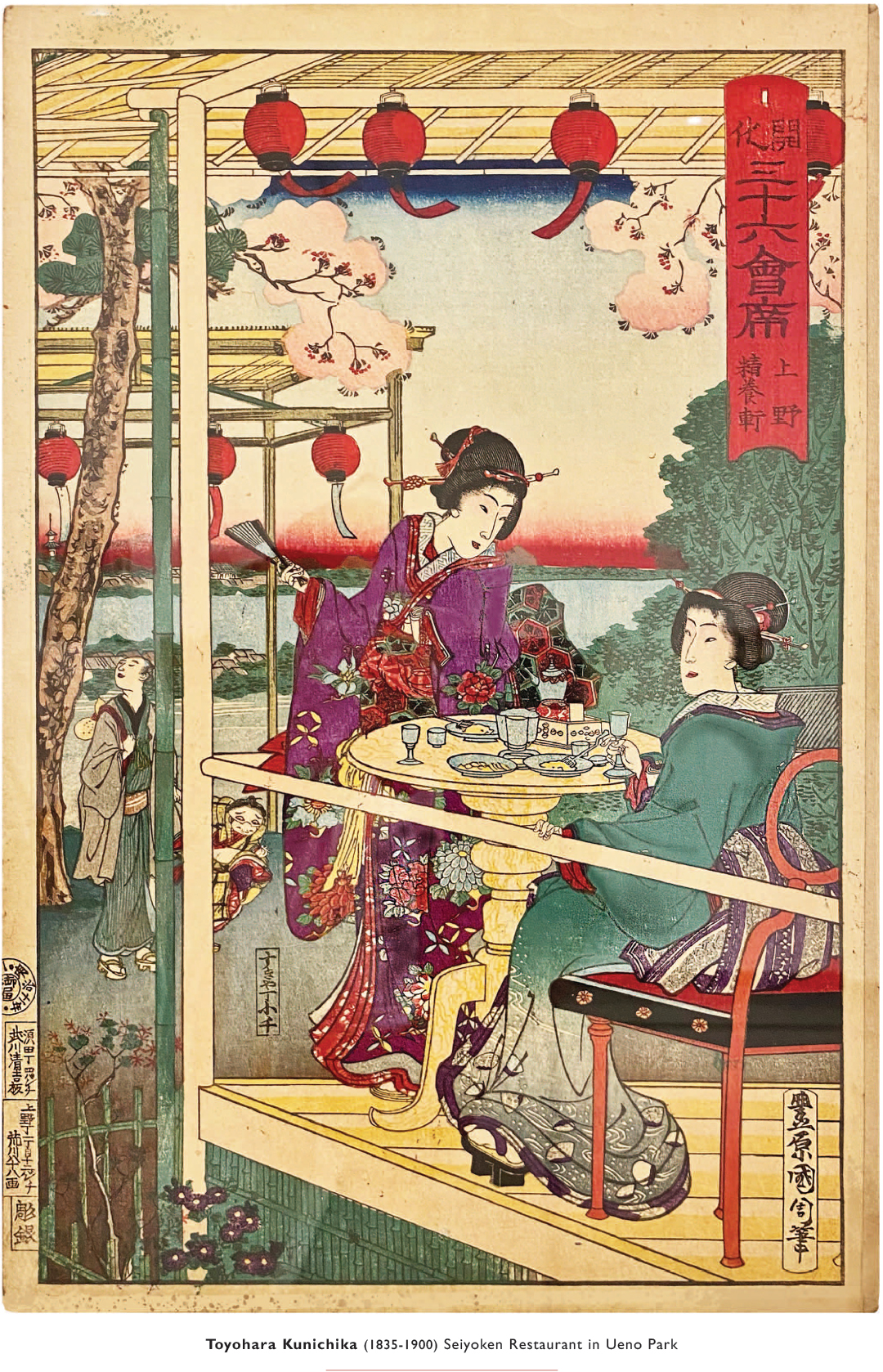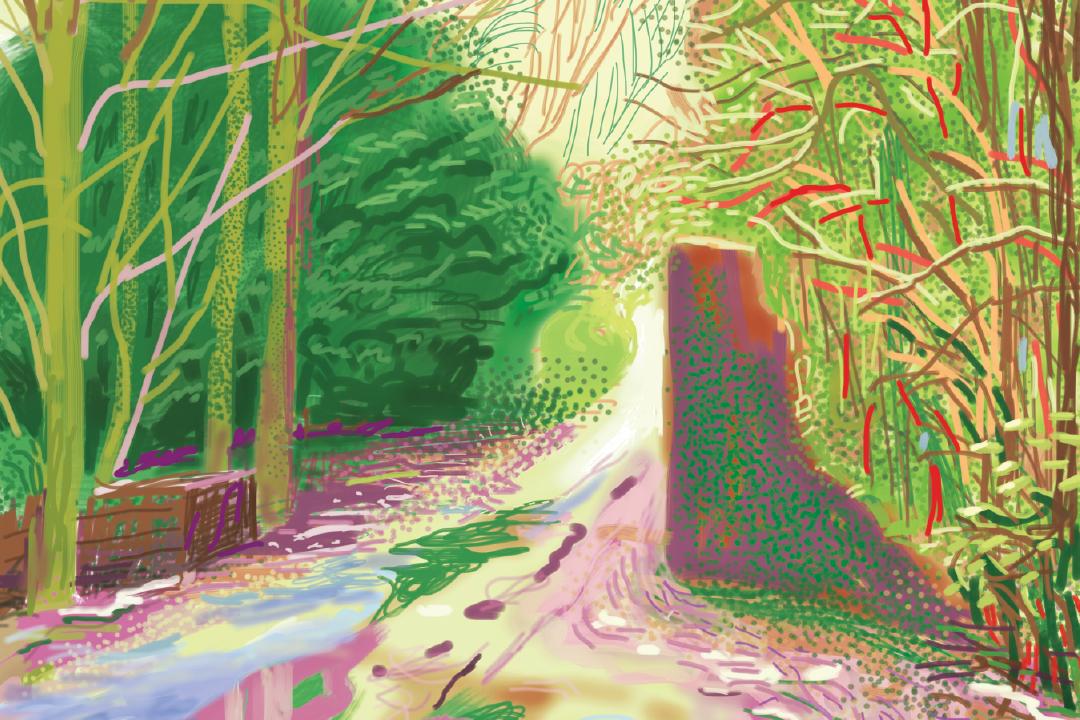
What did “going out” look like in Edo—19th century Tokyo—before food blogs and Instagram? The Hilbert Museum of California Art at Chapman University answers that question, plating up a feast of rare ukiyo e woodblock prints in “Famous Restaurants in Edo: Japanese Ukiyo-e Prints from Mie Gallery,” on view through February 15, 2026. Drawn from the Mie Gallery collection and curated by gallery owner Richard Parr, the exhibition explores how Japan’s top printmakers captured the glamour, tastes and social theater of the city’s most celebrated eateries.
The show gathers 23 prints by five masters—Utagawa Hiroshige, Toyohara Kunichika, Utagawa Kuniyoshi, Tsukioka Yoshitoshi and Utagawa Kunisada—united by a single, delicious theme: restaurants as cultural stages. These images sometimes functioned as refined advertisements, pairing views of dining rooms and riverside terraces with portraits of fashionable beauties or star kabuki actors, who lent cachet to the establishments they frequented.
“These prints are the 19th century equivalent of destination dining features,” says Richard Parr, owner of Mie Gallery and curator of the exhibition. “Restaurateurs in Edo understood the power of images and commissioned artists to show not just their food, but the atmosphere—the rooms, the gardens, the river light—and the famous faces who came to see and be seen."
Highlights of the exhibition include collaborative prints from “Famous Restaurants of the Eastern Capital” (1852–53), a series designed jointly by Kunisada (figures) and Hiroshige (landscapes). In these dynamic compositions, a charismatic kabuki actor commands the foreground while an inset vista locates the restaurant —sometimes with remarkable topographical specificity—just beyond. The pairing is both star power and sense of place, a clever formula that made the series a hit for Edo viewers and a touchstone for today’s collectors.
Another standout thread is Toyohara Kunichika’s late Edo and early Meiji sequences—such as the “Thirty Six Famous Edo Restaurants” and “Thirty Six Modern Restaurants” (1878)—where impeccably dressed geisha beauties mingle with crisp architectural details that reveal interior layouts, screens, lanterns and signage. These prints show how swiftly Western perspective entered Japanese image making, even as subjects remained rooted in urban leisure. Hiroshige’s own “Famous Restaurants in Edo” (c. 1838–40) contributes lyrical cityscapes populated by ordinary diners, a reminder that the “floating world” included families as well as fashion plates.

The engaging print shown above was created by Kunichika from his 1878 series “Thirty-Six Famous Edo Restaurants.” The view shows the Western way of dining, with an English-style table and chairs, that so fascinated the city at the time. Springtime flowers are in bloom as two well-known geisha—their names are in the small rectangular cartouches near them—relax at the table on the restaurant’s balcony. Potential visitors to the restaurant could look at this print and take in the same view the women are enjoying, out over a peaceful lake or river and distant houses.
“What I love about this exhibition is how it widens the story of ukiyo-e beyond geisha and actors,” says Mary Platt, director of the Hilbert Museum. “You see the architecture, the neighborhoods, the bustle of evening arrivals, and the rituals of hospitality. These prints let you time travel into Edo’s dining culture—and they’re just gorgeous.”
Ukiyo-e literally means “pictures pleasure districts, theaters, teahouses and scenic spots that defined urban life in Edo. As Mie Gallery’s research notes, restaurant prints tapped that same current, serving both as artworks and aspirational guides. Patrons could recognize particular restaurants by their riverside views and lanterns; connoisseurs could name the actor or geisha on sight. The synergy of brand, celebrity and design feels strikingly modern—very much like today’s “influencer” culture.
Parr adds, “For visitors new to Japanese prints, the restaurant theme is an easy—and delightful— entry point. There’s humor, fashion, even a hint of foodie culture. Look closely and you’ll spot menus, specialty dishes and seasonal scenery that tell you when and why a place became famous.”
- - - -
The Hilbert Museum of California Art at Chapman University is located at 167 North Atchison St. in Old Towne, across from the train station. The museum is open Tue-Sat 10 am to 5 pm, and admission is free. To save time checking in, pre-register online at www.HilbertMuseum.org. More information: 714-516-5880 during open hours.



